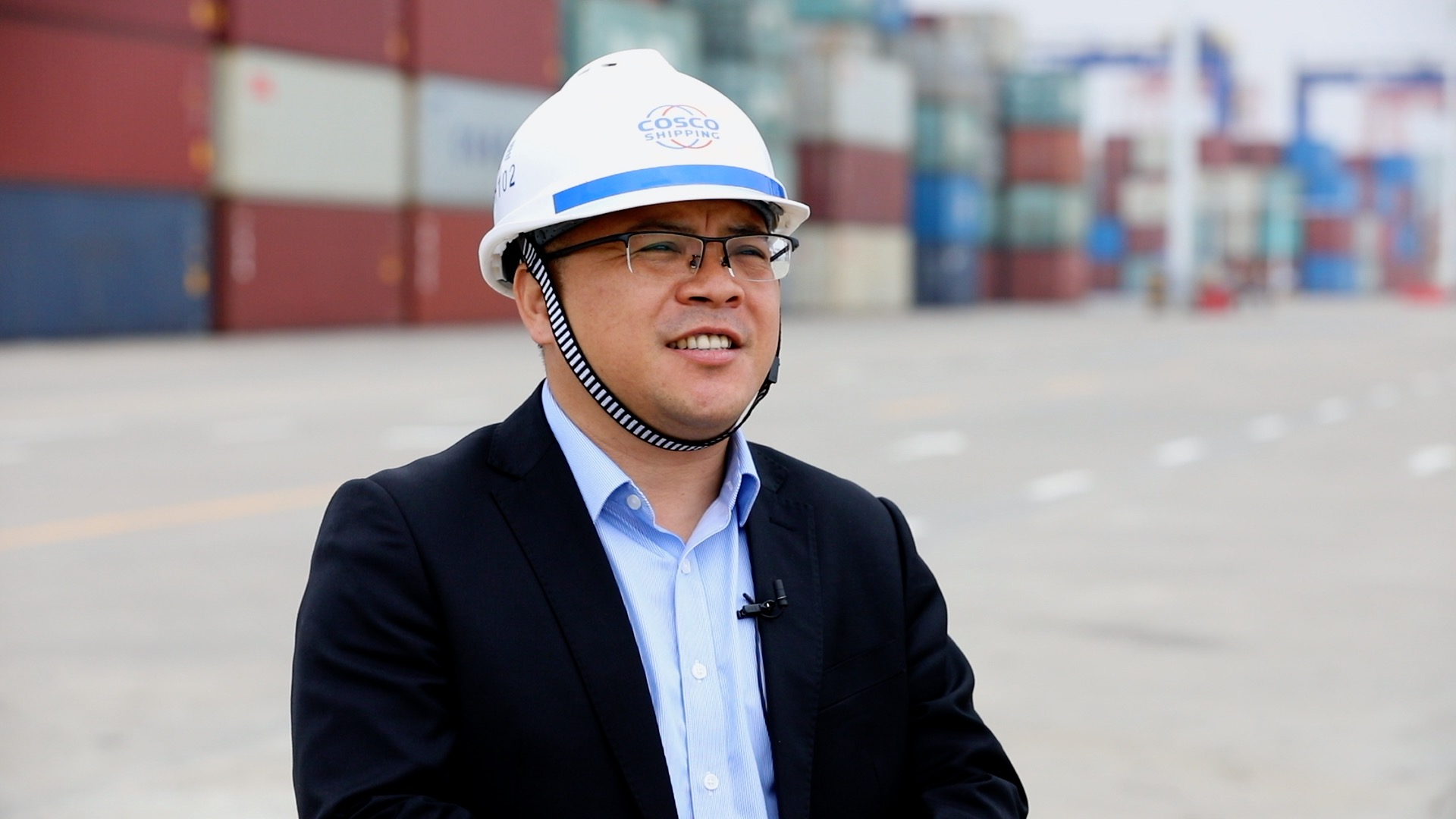

A rich economy and a fully developed future are in store for China's southernmost province of Hainan, which stems directly from the country's development goals for the island.
Last June, China's economic planners issued a roadmap for Hainan to be transformed from a holiday island destination into a major trade hub and free trade port (FTP). This will effectively turn Hainan into China's largest special economic zone, competing with the likes of regional hubs such as China's Hong Kong and Singapore.
Logistics and international trade will undoubtedly be at the core of Hainan's economic future, with places like the Yangpu Port playing a significant role.

Ye Yang, deputy director of the Hainan Yangpu Economic Development Zone. /CGTN
"The Yangpu Port is a state-level economic development zone, home to a modern services industry and a high-tech industry," explained Ye Yang, deputy director of the Hainan Yangpu Economic Development Zone.
"China has put forward a new development pattern, with the domestic market as the main body, and then international circulation, such as the Belt and Road Initiative," Ye said.
"For Hainan, we're adjacent to Southeast Asia and have the rest of China to the north. We intersect these markets. The Yangpu Port accounts for 60 percent of the province's foreign trade. We also have the most open free trade port policy here. So from these respects, Hainan will be a window of China's reform and opening-up," he noted.
Being well positioned between the rest of China and Southeast Asia, including the Association of Southeast Asian Nations, logistics and cargo transport industries are strategically poised to benefit at the Yangpu Port. The area is open for shipping business over 300 days a year, housing 42 shipping berths with a total shipping capacity of over 100 million tonnes.
Local authorities, however, still believe a lot can be improved and upgraded at the Yangpu Port, which is relatively small to other coastal transportation hubs in the country.
"We have to learn from other advanced regions, especially when it comes to management expertise and matured markets. Once we absorb these skills from other free trade zones, we'll be able to better serve enterprises here."

Chen Shiwen, deputy general manager of Hainan Harbor Logistics. /CGTN
Chen Shiwen, deputy general manager of Hainan Harbor Logistics, agrees that a learning curve is in place for the port.
"Yangpu is a new experimental zone for Hainan and the free trade port, and as the free trade port continues to develop, more enterprises will set up shop here, and port conditions will improve," he said.
"So for logistics enterprises, the opportunities are growing. Yangpu Port is part of China's reform plan, so policy-wise, it will have greater advantages compared to other hubs."
Meanwhile, under Hainan's FTP Plan, logistic flows will be eased. The plan includes a trial policy of tax rebates for departing goods at the port, and even export rebates for domestically built ships that are registered for international transport.
This policy more or less lines up with China's often long-term and meticulous economic planning, including the nation's 14th Five-Year Plan (2021-2025).
That future role of trade significance resonates with investment analysts, seeing China's reform and opening up as not only inward-oriented but also active in attracting foreign investment.

Giovanni Lovisetti (R), a senior associate at professional services firm Dezan Shira & Associates. /CGTN
"Foreign investment has been about $3 billion, doubling the figure of $1.5 billion in 2019," said Giovanni Lovisetti, a senior associate at professional services firm Dezan Shira & Associates.
"One of the highlights of the Hainan Free Trade Port is a very low corporate income tax (CIT) and individual income tax rates. Specifically of the period to 2025, there will be a reduced 15 percent CIT rate, to be applied to enterprises registered in the Hainan Free Trade Port that are engaged in encouraged industries."
The province's plans are clearly outlined, with Hainan estimated to be a leading business environment in China by 2025. Then, provincial authorities believe the Hainan FTP will reach a mature stage of operation by 2035. Finally, at its fully completed stage in 2050, the FTP is forecast to be a hub with strong international influence.

 Award-winning photos show poverty reduction achievements in NE China's Jilin province
Award-winning photos show poverty reduction achievements in NE China's Jilin province People dance to greet advent of New Year in Ameiqituo Town, Guizhou
People dance to greet advent of New Year in Ameiqituo Town, Guizhou Fire brigade in Shanghai holds group wedding
Fire brigade in Shanghai holds group wedding Tourists enjoy ice sculptures in Datan Town, north China
Tourists enjoy ice sculptures in Datan Town, north China Sunset scenery of Dayan Pagoda in Xi'an
Sunset scenery of Dayan Pagoda in Xi'an Tourists have fun at scenic spot in Nanlong Town, NW China
Tourists have fun at scenic spot in Nanlong Town, NW China Harbin attracts tourists by making best use of ice in winter
Harbin attracts tourists by making best use of ice in winter In pics: FIS Alpine Ski Women's World Cup Slalom
In pics: FIS Alpine Ski Women's World Cup Slalom Black-necked cranes rest at reservoir in Lhunzhub County, Lhasa
Black-necked cranes rest at reservoir in Lhunzhub County, Lhasa China's FAST telescope will be available to foreign scientists in April
China's FAST telescope will be available to foreign scientists in April